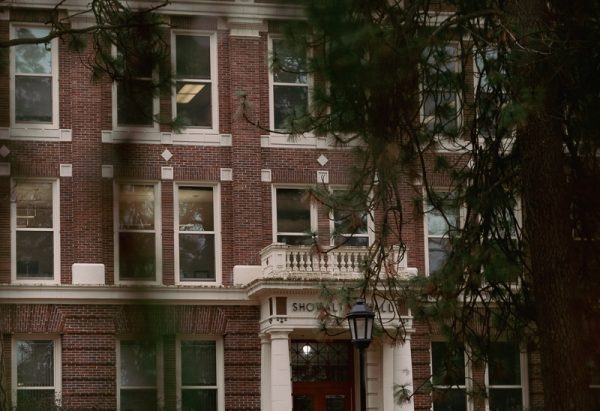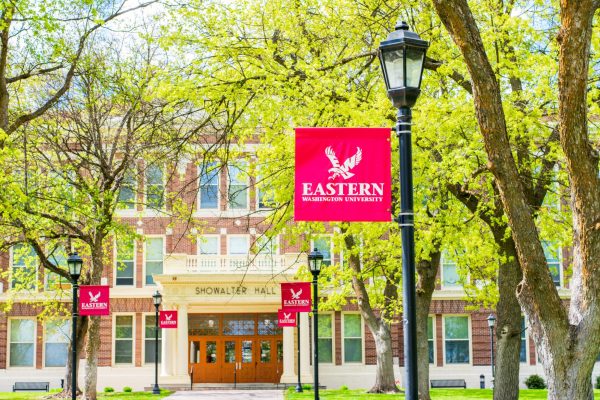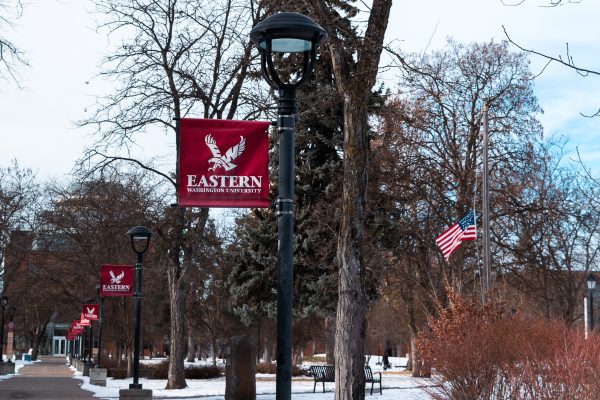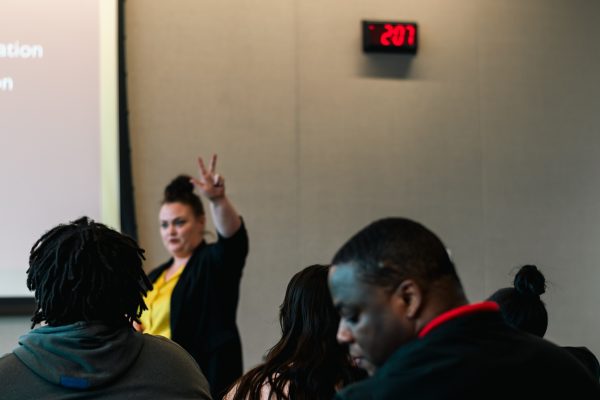Library incorporates technology tools
October 24, 2012
Campus technology slowly moves to expand technology access to students, faculty and staff through innovative pilot projects and maintenance.
The Office of Information Technology held the first annual EWU Fall Teaching and Technology Sampler event where individuals from the department, EWU Libraries and academic affairs presented technology tools for faculty, staff and students. The event took place Oct. 11.
“We set out the services that we offer,” eLearning services media personal Grant Ramsay said. Available at their media service table was information regarding services offered for faculty and their course work.
From the library there were two tables presenting two pilot projects headed by learning resources librarian Nadean Meyer and Joanne Percy from the department of inter-library loan.
Having purchased 10 iPads, 10 nooks and 10 kindles—the duo hopes to expand the use of technology for students. The first pilot project deals with the iPads, the second with the nooks and kindles.
“What we’re doing is preloading them with some K-12 applications and then we’re working within two special groups of education,” Meyer said.
Special education methods and math education methods are the two classes currently participating in the on-going pilot project.
According to Meyer, only students from those courses will be allowed to check out the equipment. The project kicked off this year, and a report will be presented back to the library spring quarter. The department wants to figure out the sorts of problems arising when multiple individuals share an iPad and suggestions on how more students can access the equipment.
The use of tablets and iPads can make for a more efficient way to access materials. For example, if students want to check out a book from the library, often times there are waiting lists or the books are unavailable. With devices such as the kindles, materials can be uploaded.
“There’s plenty of technology that students need access to that they’re not able to afford on their own, so maybe one of the things we’re looking at is that we will have to purchase blank iPads, let student do whatever they want and when it comes back we clear if off. … We don’t know which way it will turn out, but those are just some of the questions,” Meyer said.
Common complaints and issues from students include logging into Canvas, connecting to the campus Wi-Fi and resetting student username and password for campus log-ins.
“As with most higher education organizations, the biggest technology related issue we see at the beginning and throughout the year is password resets. Other than that, we receive a number of requests to troubleshoot issues folks have with their desktops and laptops,” Chief Information Officer for the Office of Information Technology Gary Pratt said in an email.
On the Eastern Office of Information Technology website, students, staff and faculty can find maintenance alerts that indicate whether or not there was a problem, what the problem was and the status of its resolution.
“Depending on the issue, often this tool is used [as] a mechanism for keeping our community of users … informed of existing systems and services issues or scheduled maintenance,” Pratt said.
The different colors indicate different stages of the issue. Green icons indicate a resolved or completed issue and yellow and red indicate larger service issues and scheduled issues for maintenance. According to Pratt, these alerts are updated immediately following the technical issue, or when maintenance occurs, upon resolution.
Other issues include fixing software issues and getting virtual labs to work. Virtual labs enable anyone to log in from any computer and open an Eastern network.
“The virtual labs already have preinstalled a lot of the programs that a lot of the classes on campus use,” Chad Imler from JFK Library’s technology support services said.
The technology services at JFK Library primarily handle software issues. Other hardware issues are typically referred to outside companies, according to Imler.
“Each student calls in, typically to the help desk, and they have a routine to bring them directly to us so we have to work through it manually,” Ramsay said.
Ramsay is currently working to connect instructors and students through faster, easier methods.
“I need to have an easier way for faculty and students to use video and audio in their course work,” said Ramsay. “We’re looking at different solutions for that.”
Other methods for uploading and viewing course work include the use of iTunes for faculty and students.
“We have a lot of people in [the] social work [department] that have used that. People in [communication] studies use it as well,” said Ramsay. “That’s a way of letting both faculty and students work and have video and audio back and forth easily. We’re looking for easier ways.”
This project began last August, according to Ramsay. These open systems currently have solutions in place, but the Office of Information Technology continues to look for better solutions.
“It’s not like we don’t have a service,” said Ramsay. “We’re just constantly trying to find an easier way to help faculty and students with their content.”
Currently, the Office of Information Technology is working on 18 of 27 projects. Some projects include the Learning Management System, myEWU Portal, the Learning Commons and Canvas.
Determining when a project will be completed depends on the needs of the business and academic departments requesting the projects, according to Pratt. Projects also vary on the need of the student tech fee project list from each year.
“The work is determined, categorized and prioritized by the President’s Executive Committee. Additionally, it depends on the overall workforce availability in comparison to what project work is already in the queue,” Pratt said.



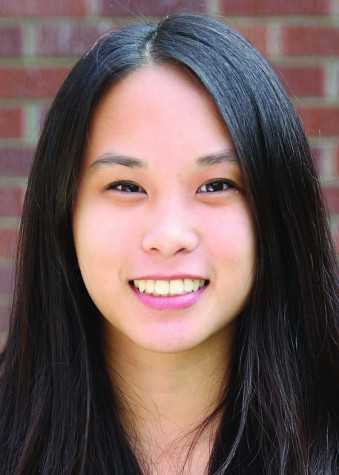


![Simmons said the biggest reasons for her success this year were “God, hard work, and trusting [her] coach and what she has planned.”](https://theeasterner.org/wp-content/uploads/2024/05/image1-1-1200x800.jpg)




